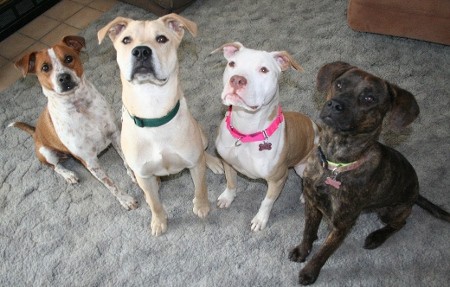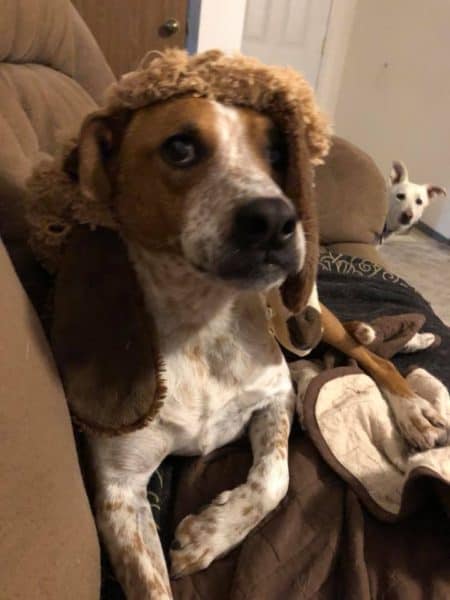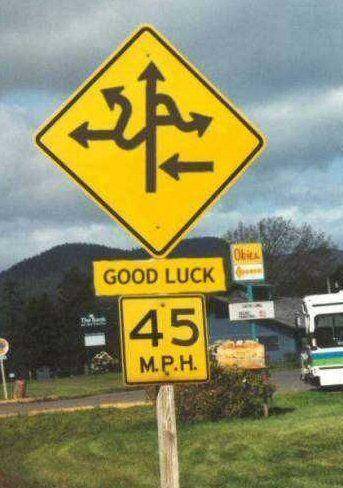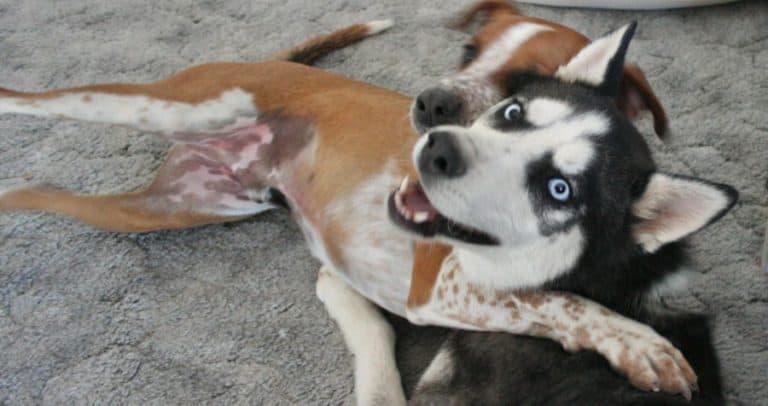Looking into a typical article from an experienced dog trainer dealing with positive reinforcement, I’ll look into just what she’s actually saying and what it really means.
The subject here will be Positive Reinforcement Training Without Treats, in the Whole Dog Journal, by Pat Miller, CBCC-KA, CPDT-KA, October 2020.
What about training with treats?
I use treats when I train. So do my clients. Now that positive reinforcement training has a 25-year-plus track record in the dog world (supported by studies that affirm its effectiveness), the use of treats in training has become widely accepted and embraced.
Pat Miller
There’s certainly nothing wrong with reward training using treats, especially as this is one of the easier ways to teach people. But there’s no mandatory connection between this and positive reinforcement training (+R). I actually haven’t used treats in most training for decades, as it substantially slows down the training and distracts the dog from the desired behavior. Since Pat says it’s so very popular and effective, I’ll discuss next why that could be the case.

+R training with treats
There are variations on the definition of +R, most of them are pretty close, but a few do have mistakes or conflicts.
Positive reinforcement occurs when a desirable event or stimulus is presented as a consequence of a behavior and the chance that this behavior will manifest in similar environments increases.
Wikipedia
Not quite the one I remember from there several years ago, but technically correct, and I’ll just rephrase it a bit. If, after a dog performs a behavior, you then present the dog with something that makes that behavior more likely in similar future situations, then you have positive reinforcement.
But note that their “desirable stimulus” and my “something” is simply whatever works. So that could be a treat or praise, but if giving the dog a piece of paper to chew up worked, that would still be +R. And so would be removing a barrier to something, like opening a gate. And the desirable stimulus doesn’t even have to be one that the dog likes, but only desires.
Each time the dog jumps up on him, he pushes the dog off. The dog doesn’t like being pushed off, but desires the attention he’s getting, so he jumps up yet again.
There is one more implied possibility here, which is sometimes the most important of all. If you teach the dog a behavior which, when performed, by itself causes the dog to be presented with something desirable, and which then increases the future likelihood of that behavior, then the +R is auto- or self-reinforced.
If you go that route you don’t need any treats or much repetition, as the dog will continue to practice all by himself!
Addendum: The Negative-Positive Connotations (5/25/2022)
Somebody disagreed with my barrier example, claiming that was actually negative punishment, so let’s look into that.
Let’s say the dog typically ran out the open gate to grab a toy, and had an expectation of the gate being open. But each time now you close the gate until he first performs some action. That could be called -P (negative punishment).
But, if there was no prior expectation, opening the gate would be seen only as part of the reward, and it would then be +R.
Alternately, if a dog trainer is taking treats from a treat-bag (which snaps shut after each) to reinforce +R, one could argue that her holding the bag closed (a barrier which the dog knows contains rewards) until the act is performed is -P.
But, is any of this really important? No.
Does it make a difference on the dog’s behavior? Not really.
Instead, exactly how you both execute the scenario and how you respond to the dog’s actions and reactions, that will make all the difference in the world here.
Phasing out treats
Whether you’re training “by hand” or using a clicker, once you’ve achieved +R while using food treats as a reward, you start moving to the next phase. This is because you want the dog to show this behavior even if you don’t have a treat handy. That opens to a rather detailed topic in behavioral psychology called Schedules of Reinforcement, but I’ll just simplify that for now.
Once the dog consistently performs the desired behavior, you begin to phase out the treats, by intermittently not giving them. This can be done randomly, in time. Or in frequency, such as giving treats 4 out of 5 times, then slowly moving to 1 out of every 5 times the behavior is performed. The idea is that the dog will still perform the behavior, hoping for the treat. Or perhaps satisfied with your praise, or just decides that he likes doing this, or forms a habit, or some combination of these.
How many sessions it takes for this can vary quite a bit. Obviously, if you weren’t using treats to start with, you can just save time and skip this phase.
Are Treats Always Needed?
The fact is, all dogs must be food motivated, at least to some degree, or they truly will starve. We all have to eat to live.
Pat Miller
Yes, of course, and we also need water to drink, and even more we need air to breathe. By her logic we are all air-motivated, and that would be a powerful way to train. Unless, of course, you see what’s terribly wrong with her statement.

Many dogs will “work” for ordinary kibble or cookie-style treats at home, but need a higher-value treat in order to focus on you and your cues when in the face of a more distracting (or more stressful) environment. And some dogs get too stressed in public to take any treats, no matter how meaty and delicious. Finding a non-food reinforce is critical for training these dogs.
Pat Miller
Of course, the higher-value treats may be more difficult to later phase-out. And many of the dogs I worked with were very scared or highly aggressive. Some came to me because they wouldn’t take any treats at any time, and often wouldn’t even allow a person to come close enough to give them one.
But, I’d like to first run through her list of reasons why a dog might not work for treats.
Why They Don’t Take Treats
- Medical causes
- Treats are low in value
- Easily bored with too many high-value treats
- Easily distracted, too many disturbances
- Not hungry
- Stressed
I’ve never seen this problem due to medical issues, without some other symptoms also presenting. Many trainers often say there’s a long list of possible medical causes. But if the dog is holding a good weight with no other symptoms, you’ll just end up with a puzzled-looking veterinarian.
The next few reasons seem to imply you need a wide selection of possible treats to use. But does that depend on the dog’s likes and moods? That’s putting a great deal of attention on something that’s only incidental to the training.
On stressed, a very scared dog is going to be stressed all the time, so you lose right from the start.
The Reinforcer
Food is what we call a primary reinforcer, meaning it has innate value to the dog. Dogs don’t have to learn to like food; they are born looking for their mother’s milk. A scratch under the chin feels good “it has innate value” so that’s another primary reinforcer.
Verbal praise, however, is a secondary reinforcer; it takes on value through its association with a primary reinforcer such as food treats, excitement, and scratches under the chin.
Pat Miller
Perhaps a bit of confusion here. She seems to say that verbal praise is only valued if you follow it with food or chin scratches. However, things like verbal praise are part of a social contact which most dogs strongly seek, and are therefore a primary reinforcer. And the same thing applies to appropriate body language responses.
One of the great things about using food as a reinforcer in training is that the dog can eat the treat quickly and immediately go on to the next behavior.
Actually, nope! Before this, you had a dog focusing on the behavior he performed. Now, he throws that completely out of his mind and puts his focus on getting and enjoying the food treat. Another term for that happening is a distraction. Compare that to praise, which not only takes a fraction of the time but which does not change the dog’s current behavior. In some training protocols, it’s literally twenty times faster!
But, you say, the dog is now associating the food with the behavior! Yeah, sure, and very soon you’re going to spend more time just phasing out the food, so he’s then associating the behavior with what now? The main advantage I’ve seen with food reinforcers is that people are often very poor in communicating what they want to their dog. That it becomes much clearer to the dog if he receives a treat after doing something.
Just how big a problem is that communication issue for many people? The answer to that is why Clicker Training is often an effective approach.
Her Non-Food Reinforcers
Here she lists tennis balls, squeaky toys, playing tug and games. All good and fine fun, but are these actually related to the behaviors you want to teach?
Tug That Toy
*Use tug to reinforce your dog’s Stay. Have your dog stay for whatever length of time she is able (set her up to succeed!), return to your dog, mark her for staying, give your release cue, then invite her to tug.
Pat Miller
My first thought is that I want to teach my dog to stay in various other situations. If I’m walking down a trail and a horse is coming, I want him to stay on command. But I really wouldn’t look forward to spending the previous day playing tug with my dog on the trail to teach him the behavior there.

Instead, with many dozens of dogs, I used the tug game to teach them good behaviors that are associated with that game. To carefully grab the toy, to release on command, to wait until told to get it. And even starting to share with other dogs. These are all things inherent to this game, which also directly relate to behavior with other desired objects.
Only Sniff on Command
Have your dog walk politely with you for a reasonable stretch (short enough that she can succeed!), then give her a release cue and say, “Go sniff!â€
Pat Miller
Just what is this thing she has about the dog walking politely instead of sniffing? That’s the dog’s walk, and only allowing her to sniff on command makes you very impolite and abusive. I walk several dogs and we all stop for anyone that wants to sniff, as that’s one of their greatest joys from walking outside.
I’ve seen people walking their trained dogs who stay so very nicely by their side the entire time until she allows the dog to stop and sniff or pee. And these people think their trainer was so great, and that their dog’s behavior is so very good.

My dog will stay by my side if I ask him to do so. But most of the time he’s constantly looking and sniffing all around, searching for things of interest. He’s not a robot, but a being with thoughts and feelings, who can experience enjoyment from something. For that, look at the reasons for walking a dog, then try leash training, not just for your dog, but for you also.
Contextual reinforcers
With most of the scared dogs I’ve worked with, just about none of her ideas would work. Instead, there are things called contextual reinforcers, which are items or behaviors that the dog desires or is already familiar with, but which are also related to the behaviors you wish to target. In one example I gave above, I used the tug game to teach behaviors related to resource guarding issues and tooth control.
While she suggests making a list of the things your dog likes, I just present him with a wider variety of different situations and observe how he reacts. When starting with very scared dogs, the first item is modifying their security response. I prepare several different types of places they can run to when scared, and I encourage them to choose one.
Within a few days, the dog’s gone from hiding in her crate to laying in a dog bed in the corner of the room, under a table. They then have that behavior that allows them to feel safe, while still observing everything that’s going on. When bringing them back in, I can then add a verbal cue to their returning to their safe spot. And it all continues from there. They initially eat in their safe location, then slowly further and further away.
Some aggressive dogs are interested in others but simply lack social skills. I have three dogs who are skilled in providing contextual reinforcers, in getting the dog to start reacting to something he’s interested in. Then slowly shaping his behavior and teaching social skills. They often use something called positive reinforcement but never bother with food treats.
The typical is found lacking
For all their articles and certifications, typical trainers appear unfamiliar with many fundamental components of the science they claim to be using. While using food treats for reinforcement is often a convenient and simple approach to teach people, they often say little about how to phase out the treats, even though that science is well established for many decades.
On training without treats, most seem to be just guessing their way around, as they’ve never fully understood much of what they do. I have hopefully added a few simple thoughts and concepts to that issue.
